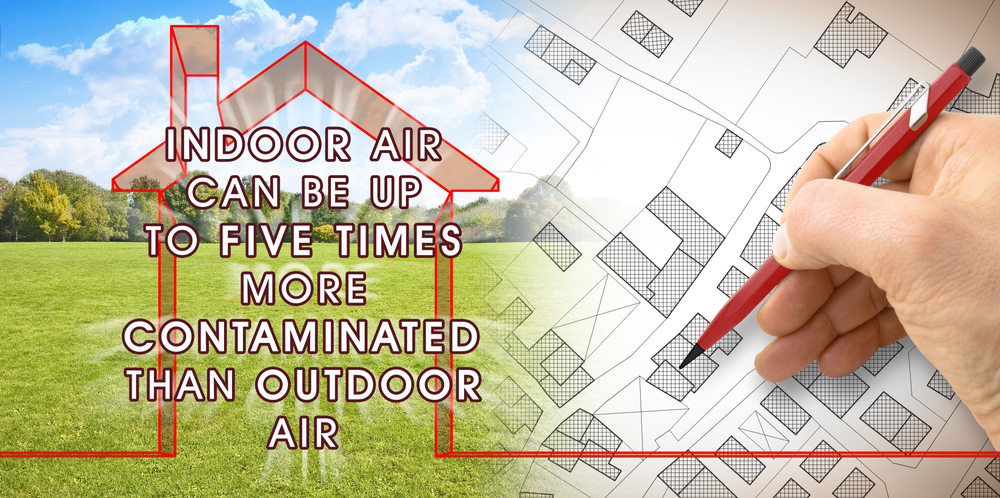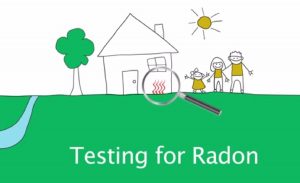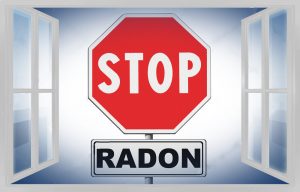Did you know that indoor air can be five times more contaminated than outdoor air?
Whether your home is old or new, you should opt for radon gas testing. Radon gas is not detectable through the eyes or nose. This radioactive gas exists in the natural world. When the gas is outside, it does not cause harm because it dissipates quickly.
However, inside your home, the concentration of the radon gas increases, which can significantly harm your health. In the United States, radon is the second leading cause of lung cancer deaths. However, with the right equipment and proactive testing, this gas is easy to identify and remove from your home.
Radon Gas: How is radon produced?
When uranium and radium disintegrate in the water, rock, or soil, it produces radon gas. It eventually moves upwards through the soil and mixes with the air you breathe. Eventually, the radon will enter your home via holes and cracks in the foundation and even the well water.
Once the gas is inside, the radon gets trapped and builds to dangerously high levels. You and your family will keep inhaling this gas. Radon is made up of radioactive particles. When you breathe it in, it damages the lining of your lungs. Over time, it may develop into lung cancer.
What are the possible sources of radon gas?
1. Soil
This radon gas source is the most worrisome. When the stones and rocks decay underneath your home, they release radioactive elements. One of these elements is radon gas. If the gas builds in quantity, it may eventually seep up through the gaps, cracks, and porous materials under your house.
Basements located underground level are a cause for concern. To construct the basement, the builder had to dig deep into the ground. They potentially came into contact with radioactive components like radium or uranium. Radon gas may leak up through the floor cracks or basement wall.
2. Rocks
Surprisingly, these natural elements contribute a large amount to the radon that escapes into your home. Stones and rocks have veins that have radioactive elements. This eventually decays and changes into radon. Although the radon discharged from the rocks outdoors diffuses quickly, the radon in the rocks under the foundation flows up through the cracks in the foundation and walls.
3. Gaps and cracks
Even though crawl spaces are prone to radon issues, cement foundations in the basement or slab can develop cracks. This is partly because cement has a porous nature. When coupled with gaps in the pipes and flooring, radon will easily enter your home.
4. Stone
Whether you have stones in your garden, patio, kitchen, aquarium, or fireplace, many natural stones contain small amounts of radium and uranium. This exists in nature. Over time, these hard metals decay and transform into radioactive elements such as radon gas. The radioactive content in a given stone slab varies. You have to be in close contact with this stone to experience the ill effects of the gas.
Granite is a popular natural stone but a big contributor to radon gas emissions in the home. Think about all the places where you may have granite such as on your countertops, floorings, walls, fireplace, etc. Keep in mind, there is no safe level of radon gas, so any emission is bad for your health.
5. Well Water
If you source well water from an aquifer, there’s a good chance there may be radon in it. Well water lies close to soil and rocks with potential radon. This moves into your home. The radon gas gets released into the indoor atmosphere through the shower, the tap, dishwasher, washing machine, etc. Even though this is a small contributor to radon in the home, it should still concern you.
Top Solutions to Radon Gas in your home
Radon in your well water can be fixed in two ways. The first is by placing granular activated carbon filters at entry points. The second solution is to install an aeration device to bubble the air through water. The released gas is vented outside.
Another solution is implementing a radon mitigation system. Before starting with this process, get your home tested for radon gas. The EPA recommends actions if the radon level in your home is 4.0 pCi/L or more.
Once you’ve determined the radon level, decide on a radon mitigation system. Most homeowners prefer installing PVC pipes inside the home or a motorized fan. The fan will rely on pressure differences to pull the radon out via pipes and push it out through a vent.
Always hire a certified company for radon gas testing and mitigation requirements. Get in touch with Atlantic Radon Mitigation to speak to a radon mitigation specialist today.




